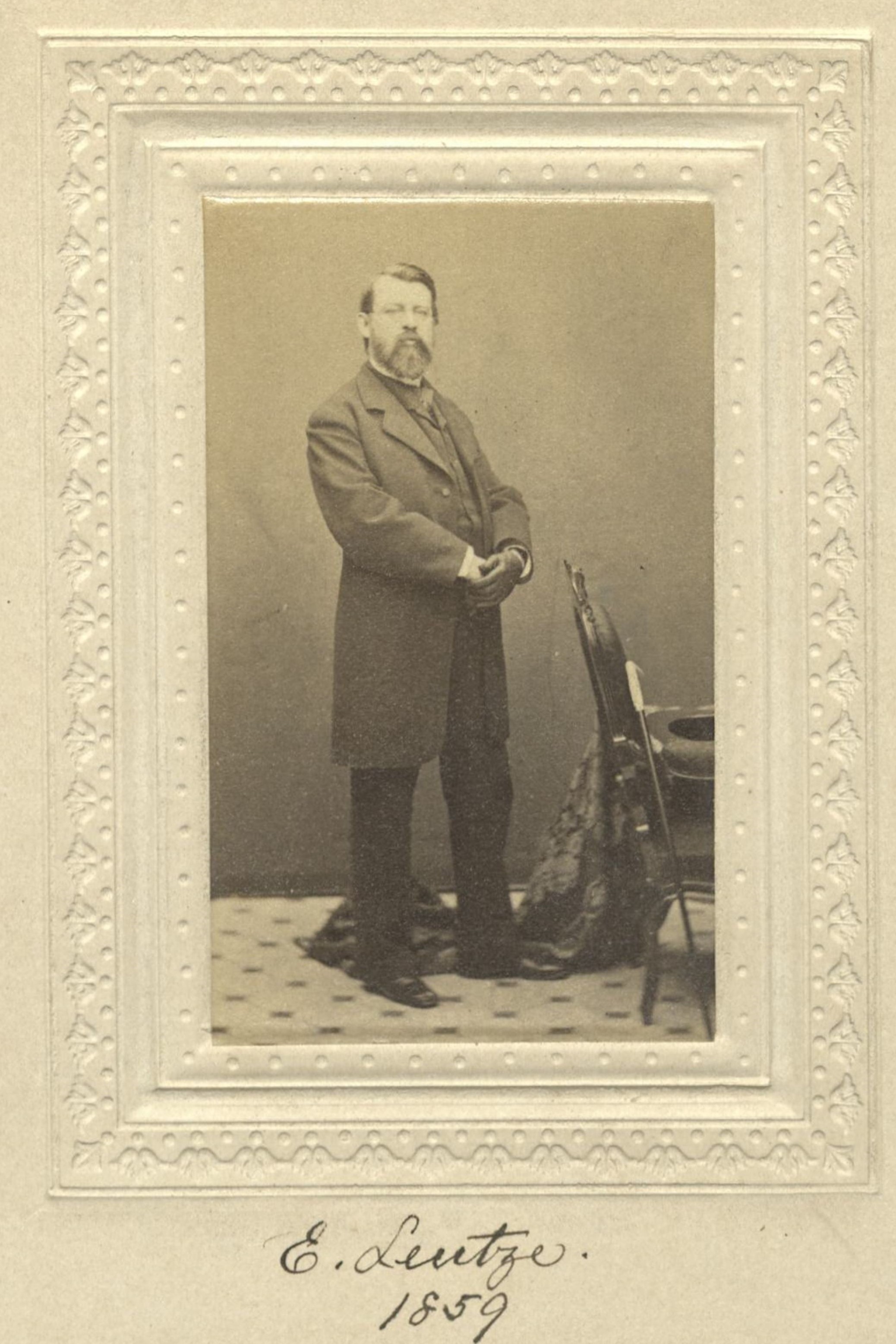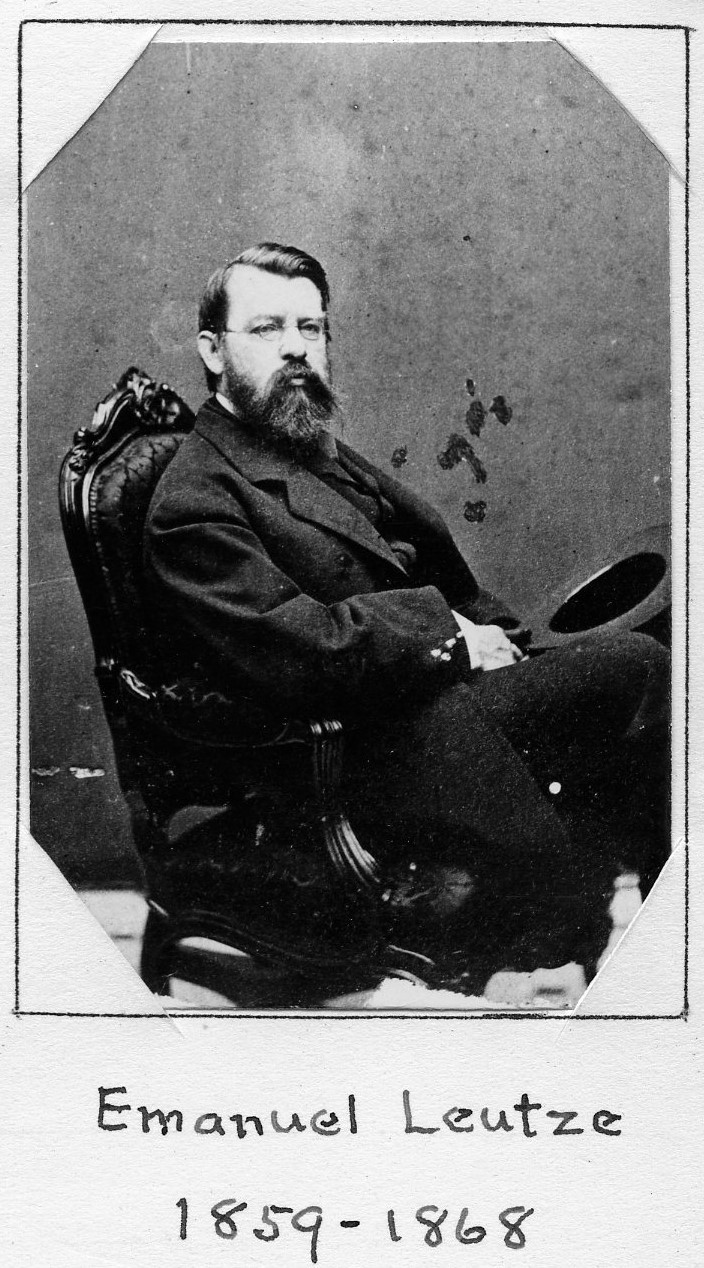Artist
Centurion, 1859–1868
Born 24 May 1816 in Schwäbisch Gmünd, Württemberg, Germany
Died 18 July 1868 in Washington, District of Columbia
Buried Glenwood Cemetery , Washington, District of Columbia
, Washington, District of Columbia
Proposed by William Kemble
Elected 1 October 1859 at age forty-three
Seconder of:
Century Memorials
That current brings, but it also bears away. Down its mournful ebb have gone during the past year Bonney, the accomplished and upright jurist—Fuller, with his steady grasp of affairs, his clear honesty, and warm heart—the cultivated force and rich and vigorous personality of Leutze—and Cozzens, for whom as a patron of Art, sure discernment inspired princely liberality, and for whom, as a man, friendship laments that the days he knew so well how to enrich with all its delights, should have closed so early and so sadly.
Augustus R. Macdonough
Annual Meeting Minutes, 9 January 1869
Leutze was born in Württemberg, Germany, and was brought to America as a child when his family settled in Philadelphia. He received his first instruction in art from J. A. Smith, a portrait painter in that city. In 1840 one of his pictures attracted attention and procured him several orders, which enabled him to go to Düsseldorf. He intended to return to the U.S. but when his teenage bride became pregnant he stayed in Germany, returning in 1859, the year he joined the Century.
A strong supporter of Europe’s revolutions of 1848, Leutze decided to paint an image that would encourage their liberal reformers with the example of the American Revolution. Using American tourists and art students as models and assistants, Leutze finished Washington Crossing the Delaware in 1850. It is owned by the Metropolitan Museum of Art in New York. In 1854, Leutze finished his depiction of the Battle of Monmouth, Washington Rallying the Troops at Monmouth, commissioned by an important Leutze patron, banker David Leavitt of New York City.
In 1859, Leutze painted a portrait of Chief Justice Roger Brooke Taney, which hangs in the Harvard Law School. Leutze also executed other portraits, including one of fellow painter William Morris Hunt. That portrait was owned by Hunt’s brother Leavitt Hunt, a New York attorney. In 1860, Leutze was commissioned by the U.S. Congress to decorate a stairway in the Capitol Building in Washington, for which he painted a large composition, Westward the Course of Empire Takes Its Way.
James Charlton
“Centurions on Stamps,” Part I (Exhibition, 2010)


